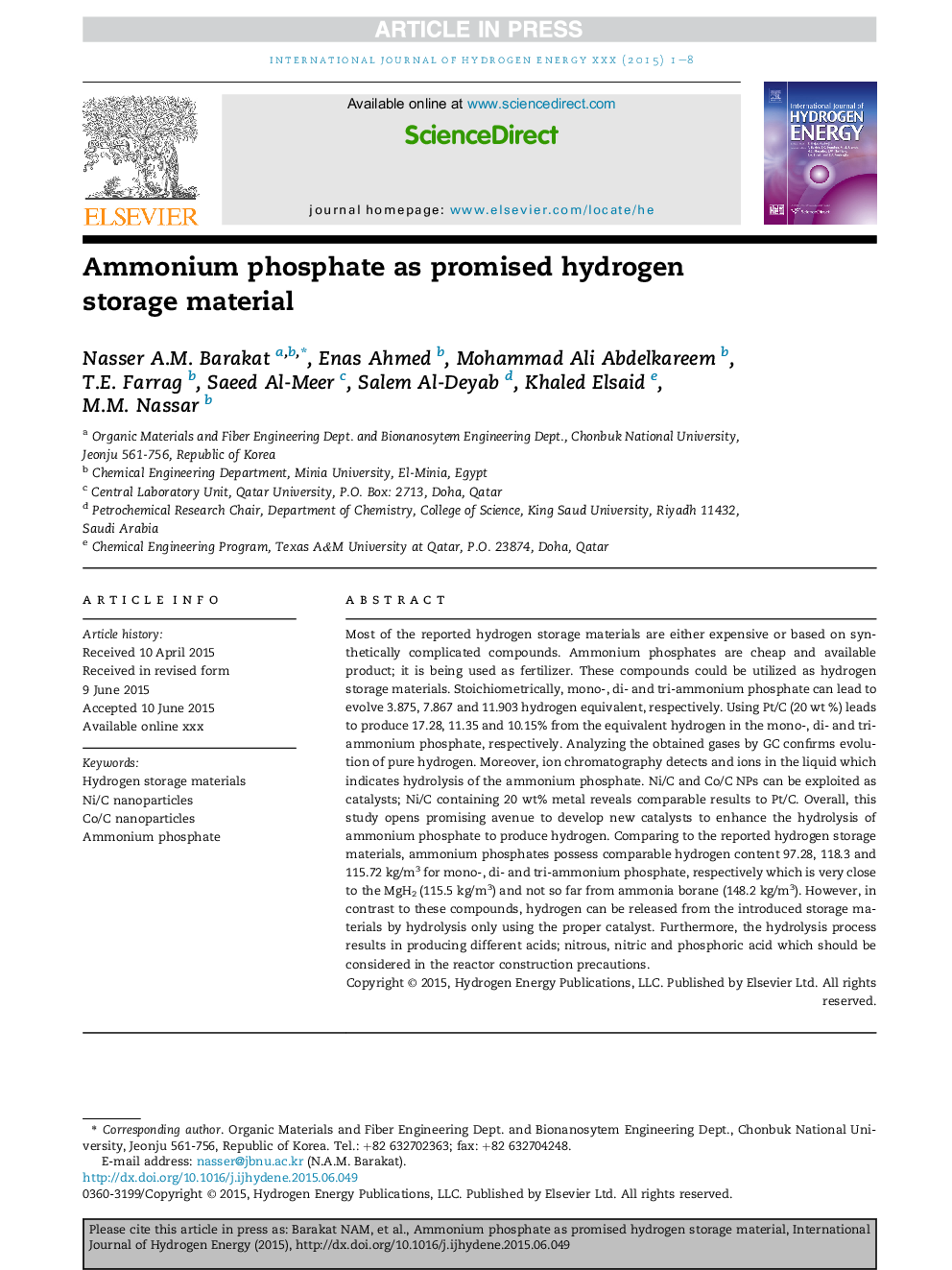| Article ID | Journal | Published Year | Pages | File Type |
|---|---|---|---|---|
| 7714746 | International Journal of Hydrogen Energy | 2015 | 8 Pages |
Abstract
Most of the reported hydrogen storage materials are either expensive or based on synthetically complicated compounds. Ammonium phosphates are cheap and available product; it is being used as fertilizer. These compounds could be utilized as hydrogen storage materials. Stoichiometrically, mono-, di- and tri-ammonium phosphate can lead to evolve 3.875, 7.867 and 11.903 hydrogen equivalent, respectively. Using Pt/C (20Â wt %) leads to produce 17.28, 11.35 and 10.15% from the equivalent hydrogen in the mono-, di- and tri-ammonium phosphate, respectively. Analyzing the obtained gases by GC confirms evolution of pure hydrogen. Moreover, ion chromatography detects and ions in the liquid which indicates hydrolysis of the ammonium phosphate. Ni/C and Co/C NPs can be exploited as catalysts; Ni/C containing 20Â wt% metal reveals comparable results to Pt/C. Overall, this study opens promising avenue to develop new catalysts to enhance the hydrolysis of ammonium phosphate to produce hydrogen. Comparing to the reported hydrogen storage materials, ammonium phosphates possess comparable hydrogen content 97.28, 118.3 and 115.72Â kg/m3 for mono-, di- and tri-ammonium phosphate, respectively which is very close to the MgH2 (115.5Â kg/m3) and not so far from ammonia borane (148.2Â kg/m3). However, in contrast to these compounds, hydrogen can be released from the introduced storage materials by hydrolysis only using the proper catalyst. Furthermore, the hydrolysis process results in producing different acids; nitrous, nitric and phosphoric acid which should be considered in the reactor construction precautions.
Related Topics
Physical Sciences and Engineering
Chemistry
Electrochemistry
Authors
Nasser A.M. Barakat, Enas Ahmed, Mohammad Ali Abdelkareem, T.E. Farrag, Saeed Al-Meer, Salem Al-Deyab, Khaled Elsaid, M.M. Nassar,
